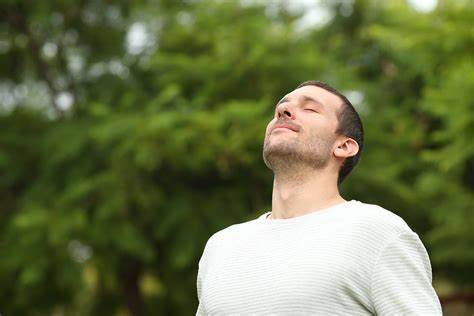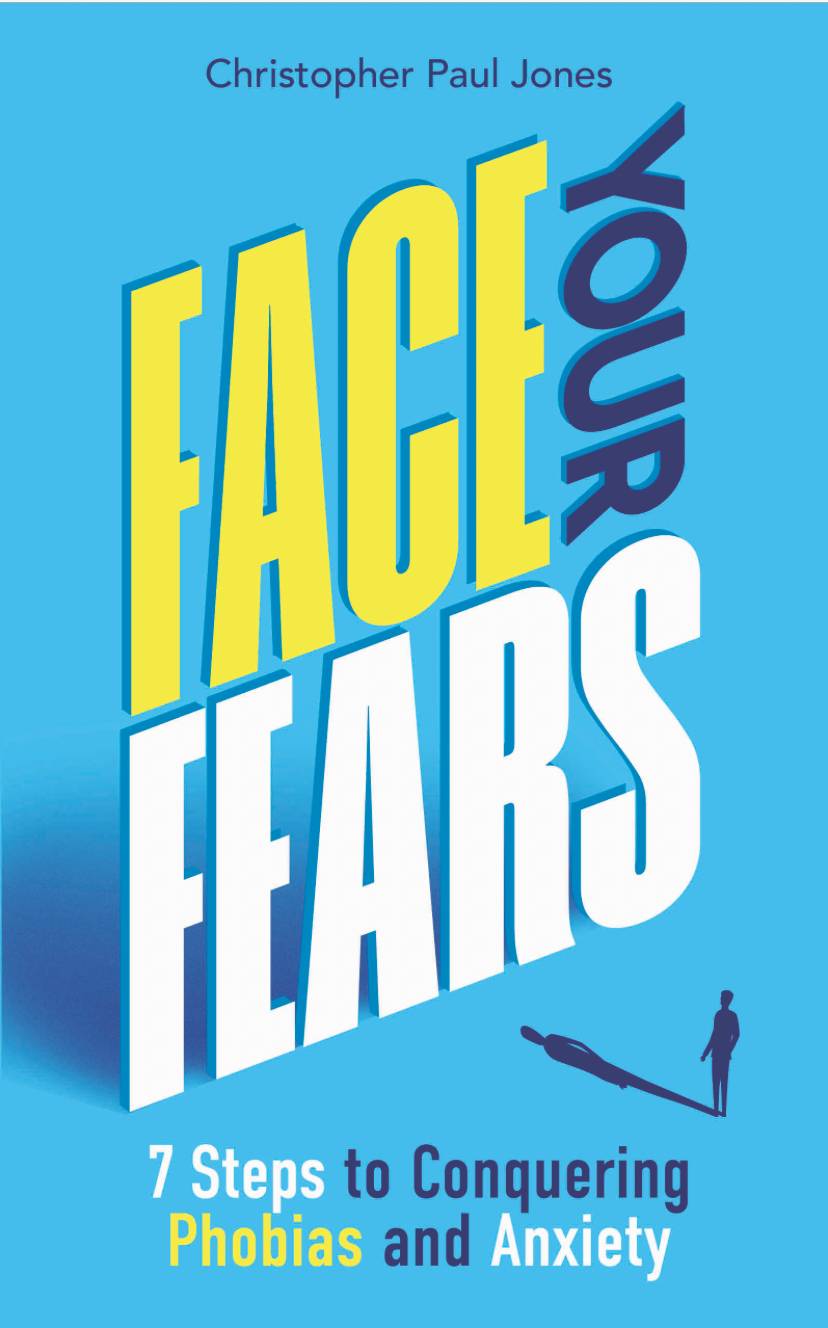Words By Christopher Paul Jones, Harley Street phobia expert and author of ‘Face your Fears – 7 steps to conquering phobias and anxiety’
Stress triggers our body’s primal fight or flight response, overseen by the sympathetic nervous system, which prepares us to respond to perceived threats by flooding our system with stress hormones. These hormones increase our state of readiness, which is beneficial in dangerous situations but detrimental when continuously provoked by daily stressors such as work pressures or interpersonal conflicts. Chronic activation of this response can lead to severe health issues like cardiovascular disease, anxiety disorders, and burnout.
 One simple yet effective method to manage your stress and anxiety is to focus on your breathing. Controlled breathing is more than just a quick fix for momentary stress relief; it is a powerful tool that directly impacts the parasympathetic nervous system, often referred to as the “rest and digest” system. This system acts as a counterbalance to the stress-induced activations of the sympathetic nervous system.
One simple yet effective method to manage your stress and anxiety is to focus on your breathing. Controlled breathing is more than just a quick fix for momentary stress relief; it is a powerful tool that directly impacts the parasympathetic nervous system, often referred to as the “rest and digest” system. This system acts as a counterbalance to the stress-induced activations of the sympathetic nervous system.
Engaging in deep breathing exercises during stressful times helps to shift the body’s balance away from the stress responses of fight, flight or freeze and towards relaxation and restoration. Each breath acts as a message to the brain that there is no immediate physical danger, allowing our physiological functions to return to baseline levels. This reduces the production of stress hormones, lowers blood pressure, and slows the heart rate, leading to a state of calm and improved mental clarity. And by activating the parasympathetic nervous system, controlled breathing helps the body to conserve energy and recuperate more efficiently after stress.
There are a variety of stress reducing breathing techniques you can use. Here are five to try.
Diaphragmatic Breathing
This technique involves deep breathing through the diaphragm rather than shallow chest breathing. When you breathe deeply through your diaphragm, the lungs expand more fully, increasing oxygen exchange which can help lower the heart rate and blood pressure.
When you breathe deeply through the diaphragm, it pushes down into the abdomen, increasing the volume of the thoracic cavity and allowing the lungs to expand more fully. This greater lung expansion leads to a more significant intake of oxygen and more efficient expulsion of carbon dioxide.
These are the steps to follow.
Position: Lie down on your back or sit comfortably, placing one hand on your chest and the other on your abdomen to monitor your breathing pattern.
Inhale: Slowly breathe in through your nose, ensuring that the diaphragm (not the chest) inflates with enough air to create a stretch in the lungs. Your abdomen should rise significantly more than your chest.
Hold: Hold your breath for a few seconds.
Exhale: Exhale slowly and steadily through the mouth, pursing the lips slightly. The hand on your abdomen should move in as you empty completely.
Repeat: Perform this cycle for 5-10 minutes to reduce stress and increase oxygen flow.
 4-7-8 Breathing
4-7-8 Breathing
Developed by Dr. Andrew Weil, this breathing pattern is designed to be a natural tranquiliser for the nervous system. To practice, you breathe in for a count of 4, hold the breath for a count of 7, and exhale slowly for a count of 8. This helps to control the rhythm of breathing and can be particularly effective in reducing anxiety or helping to induce sleep.
The pattern of holding the breath and then slowly exhaling increases the amount of carbon dioxide in the blood, which can help enhance the cardiopulmonary connection. This breathing rhythm can influence the brain’s chemistry through increased production of calming hormones like endorphins.
These are the steps to follow.
Exhale: Begin by parting your lips and making a whooshing sound as you exhale completely through your mouth.
Inhale: Close your lips, inhaling silently through your nose as you mentally count to four.
Hold: Hold your breath for a count of seven.
Exhale: Again, exhale completely through your mouth, making a whooshing sound for a count of eight.
Repeat: This cycle is repeated for four full breaths and can be practiced twice a day to manage anxiety or before sleep.
Alternate Nostril Breathing
Known as Nadi Shodhana in the practice of yoga, this technique involves closing off one nostril at a time while breathing through the other. It’s believed to balance the body’s energy channels, or nadis. By alternating the nostril through which you breathe, you can enhance overall vitality, calm the mind, and balance the left and right hemispheres of the brain, which has been shown to improve cognitive functions and emotional stability.
These are the steps to follow.
Position: Sit in a comfortable position with a straight spine.
Prepare: Place your right thumb over your right nostril and your ring finger over the left nostril.
Inhale: Close the right nostril and inhale deeply through the left nostril.
Switch: Close the left nostril with your ring finger, then exhale through the right nostril.
Inhale: Keep the left nostril closed, and inhale through the right nostril.
Switch: Close the right nostril and exhale through the left nostril.
Repeat: Continue this pattern for several minutes, alternating nostrils with each cycle.
 Box Breathing
Box Breathing
This technique, also known as square breathing, involves inhaling to a count of four, holding the breath for four, exhaling for four, and holding again for four. It’s a method often used by athletes, police officers, and others in high-stress professions to help control the breathing and regain calm and focus.
The equal timing of inhalation, holding, and exhalation in a controlled manner forces the autonomic nervous system to slow down, bringing more focus to the present moment. This breathing pattern can effectively modulate the stress response, helping to enhance performance and concentration, particularly valuable in high-stress environments.
These are the steps to follow.
Inhale: Breathe in through the nose for four counts.
Hold: Hold the breath for four counts.
Exhale: Exhale all the air out through the mouth for four counts.
Hold: Hold the lungs empty for four counts.
Repeat: Repeat the process for several minutes.
Progressive Relaxation Breath
This combines deep breathing with progressive muscle relaxation. Starting at one end of the body (usually the feet), you tense each muscle group as you breathe in, and relax it as you breathe out, working your way up to the top of your head. This not only helps in calming the mind and body but also in identifying and consciously releasing tension held in different parts of the body.
Combining breath with muscle tension and relaxation helps to highlight the contrast between physical tension and relaxation. It draws attention to areas where stress accumulates and teaches the body to recognise and manage physiological stress signals.
These are the steps to follow.
Inhale: Take a deep breath and simultaneously contract one muscle group (e.g., your feet) for 5 to 10 seconds.
Exhale: Release the breath and the muscle tension simultaneously and notice the sensations of release.
Progress: Move up the body, contracting and relaxing muscle groups as you go.
Repeat: Continue until you have contracted and relaxed all areas of your body.
Making it work for you:
Regular Practice
Set aside specific times each day for deep breathing exercises. This can be in the morning to set a calm tone for the day, during breaks to reset your mental state, or at night to ensure a restful sleep.
Mindful Moments
Use moments of waiting or downtime to practice mindful breathing, turning these into opportunities to reduce stress.
Responsive Technique
When noticing signs of stress, immediately employ deep breathing techniques to prevent the sympathetic nervous system from overwhelming the body.
Understanding and utilising controlled breathing as a tool to activate the parasympathetic nervous system is an important aspect of stress management. Through conscious effort and regular practice, anyone can harness the power of their breath to foster a more resilient and healthier life amidst the challenges of modern living.

